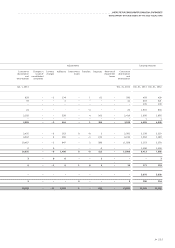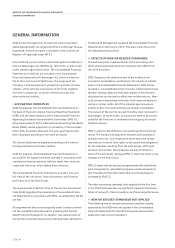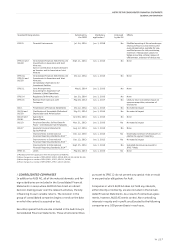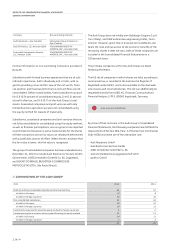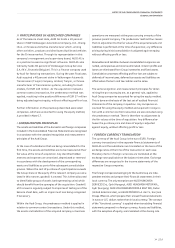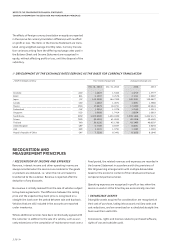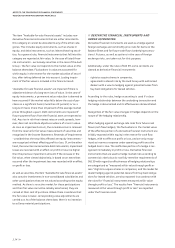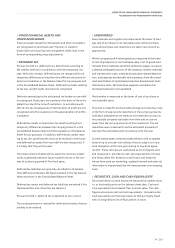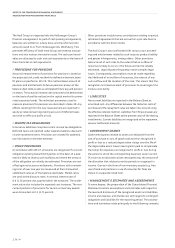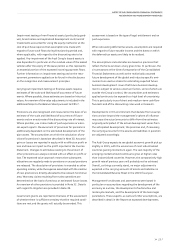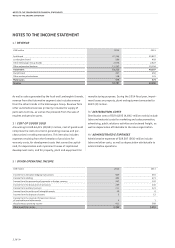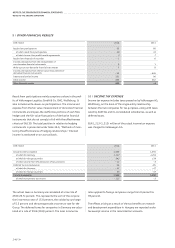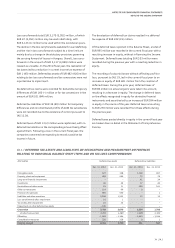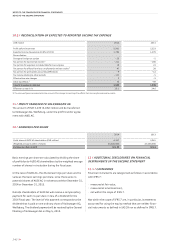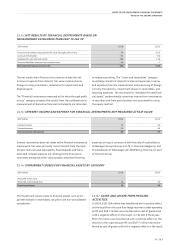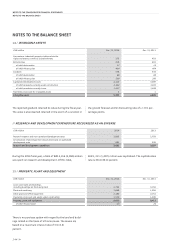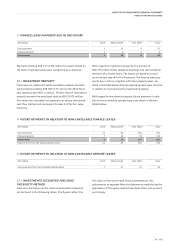Audi 2014 Annual Report Download - page 235
Download and view the complete annual report
Please find page 235 of the 2014 Audi annual report below. You can navigate through the pages in the report by either clicking on the pages listed below, or by using the keyword search tool below to find specific information within the annual report.
NOTES TO THE CONSOLIDATED FINANCIAL STATEMENTS
RECOGNITION AND MEASUREMENT PRINCIPLES
>>
235
/
OTHER FINANCIAL ASSETS AND
OTHER RECEIVABLES
Financial assets (except for derivatives) and other receivables
are recognized at amortized cost. Provision is made for
discernible non-recurring risks and general credit risks in the
form of corresponding value adjustments.
/
DEFERRED TAX
Pursuant to IAS 12, deferred tax is determined according to
the liability method in combination with the temporary con-
cept. With this concept, deferred taxes are recognized for all
temporary differences arising from the different valuations of
assets and liabilities in the Balance Sheet for tax purposes and
in the Consolidated Balance Sheet. Deferred tax assets relating
to tax loss carryforwards must also be recognized.
Deferrals amounting to the anticipated tax burden or tax relief
in subsequent fiscal years are created on the basis of the antic-
ipated tax rate at the time of realization. In accordance with
IAS 12, the tax consequences of distributions of profit are not
recognized until the resolution on the appropriation of profits
is adopted.
Deferred tax assets include future tax relief resulting from
temporary differences between the carrying amounts in the
Consolidated Balance Sheet and the valuations in the Balance
Sheet for tax purposes. In addition, deferred tax assets relat-
ing to tax loss carryforwards that can be realized in the future
and deferred tax assets from tax relief are also recognized, if
it is likely that they will be used.
The measurement of deferred tax assets for tax loss carryfor-
wards is generally based on future taxable income in the con-
text of a planning period of five fiscal years.
Deferred tax liabilities are generally recorded for all taxable
time differences between the figures posted in the tax balance
sheet and those in the Consolidated Balance Sheet.
Deferred tax assets and deferred tax liabilities are netted if the
taxable entities and maturities are identical.
Pursuant to IAS 1, deferred tax is reported as non-current.
The carrying amount is reduced for deferred tax assets that are
unlikely to be realized.
/
INVENTORIES
Raw materials and supplies are measured at the lower of aver-
age cost of purchase or net realizable value. Other purchase
costs and purchase cost reductions are taken into account as
appropriate.
Work in progress and finished goods are measured at the lower
of cost of production or net realizable value. Cost of goods sold
includes direct materials and direct productive wages, as well as
a directly attributable portion of the necessary indirect materials
and indirect labor costs, scheduled production-related deprecia-
tion, and expenses attributable to the products from the sched-
uled amortization of capitalized production development costs.
Distribution costs, administrative expenses and interest on
borrowed capital are not capitalized.
Merchandise is measured at the lower of cost of purchase or
net realizable value.
Provision is made for all discernible storage and inventory risks
in the form of appropriate reductions in the carrying amounts.
Individual adjustments are made on all inventories as soon as
the probable proceeds realizable from their sale or use are
lower than the carrying amounts of the inventories. The net
realizable value is deemed to be the estimated proceeds of
sale less the estimated costs incurred up until the sale.
Current leased assets comprise leased vehicles with an operate
lease of up to one year and vehicles that are subject to a buy-
back obligation within one year (owing to buy-back agree-
ments). These vehicles are capitalized at cost of goods sold
and measured in accordance with the expected loss of value
and likely useful life. Based on local factors and historical
values from used car marketing, updated internal and external
information is incorporated into the measurement on an ongoing
basis.
/
SECURITIES, CASH AND CASH EQUIVALENTS
Securities held as current assets are measured at market value,
i.e. at the trading price on the balance sheet date. Cash and
cash equivalents are stated at their nominal value. The cash
figures encompass cash and cash equivalents. Included under
cash equivalents are financial resources that are highly liquid
with an insignificant risk of fluctuations in value.


